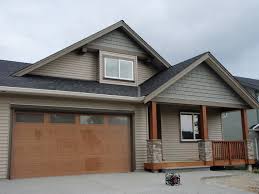 If you are building a new home or planning to renovate an existing one, you should consider the benefits of James Hardie fiber-cement siding. Fiber-cement siding is extremely fire-resistant, insect-resistant and rot-proof. However, what many homeowners value the most about James Hardie siding is its beauty. It is available in a variety of styles and textures, and the colors offered are extensive.
If you are building a new home or planning to renovate an existing one, you should consider the benefits of James Hardie fiber-cement siding. Fiber-cement siding is extremely fire-resistant, insect-resistant and rot-proof. However, what many homeowners value the most about James Hardie siding is its beauty. It is available in a variety of styles and textures, and the colors offered are extensive.
A Word About Colors
Before proceeding, it might be beneficial to provide a little information about colors.
• Cool colors having a calming effect. Greens, blues and purples are some of the popular cool tones.
• Warm colors are invigorating. Oranges, reds and yellows are common warm colors.
• The primary colors are yellow, red and blue. These colors cannot be created by blending other colors.
• Secondary colors are violet, green and orange. Each of these colors is created by blending two primary colors.
• Tertiary colors are those created by combining a primary color with one of the secondary colors beside it on the color wheel.
• The color wheel consists of the primary colors, the secondary colors and six tertiary colors.
• Complementary colors appear on the color wheel directly opposite from each other.
• Analogous colors are those immediately beside each other.
• A triad consists of a color and the two shades appearing immediately next to the complementary color.
• Neutral colors are those that go with virtually any other color.
Choosing Colors for Your Home
Your home’s architecture, your personal preferences and the details you want to highlight determine the number of shades to select. Most traditional homes employ a triad; one color is used for accent, another for trim and the third for the body, which is the bulk of the home. However, some styles of architecture can benefit from the use of four or more colors.
If your roof is going to remain, choose colors that work well with the color of your roof. This is not to imply that your siding should match your roof. You just do not want to choose a siding color that will look unattractive next to your roof. Unless your roof is a neutral color, you will probably prefer to keep the body color in the same warm or cool family as the roof.
Most people prefer to choose a trim color that is lighter than the body. The lighter color draws the eye, making it easier to emphasize architectural features. However, on many Victorian homes, the trim color is darker, creating a shadowed effect.
As a rule, dark complementary colors and strongly contrasting colors can make a home appear smaller. For example, a dark body color with white trim can make the house look smaller. However, certain designs can benefit from the use of colors that visually reduce the size of the home. If you want your home to appear larger, soften the contrast between the trim and body colors by incorporating a tertiary color or choosing analogous colors.
Once you have an idea of the features you want to highlight and the color families you prefer, you are ready to review the colors offered by James Hardie.
James Hardie Siding Colors
James Hardie manufactures siding in an extensive range of colors. Here are some of the colors from which you can choose.
• Countrylane Red
• Chestnut Brown
• Mountain Sage
• Woodstock Brown
• Iron Gray
• Evening Blue
• Boothbay Blue
• Heathered Moss
• Sandstone Beige
• Sail Cloth
• Timber Bark
• Monterey Taupe
• Cobble Stone
• Khaki Brown
• Autumn Tan
• Arctic White
• Navajo Beige
